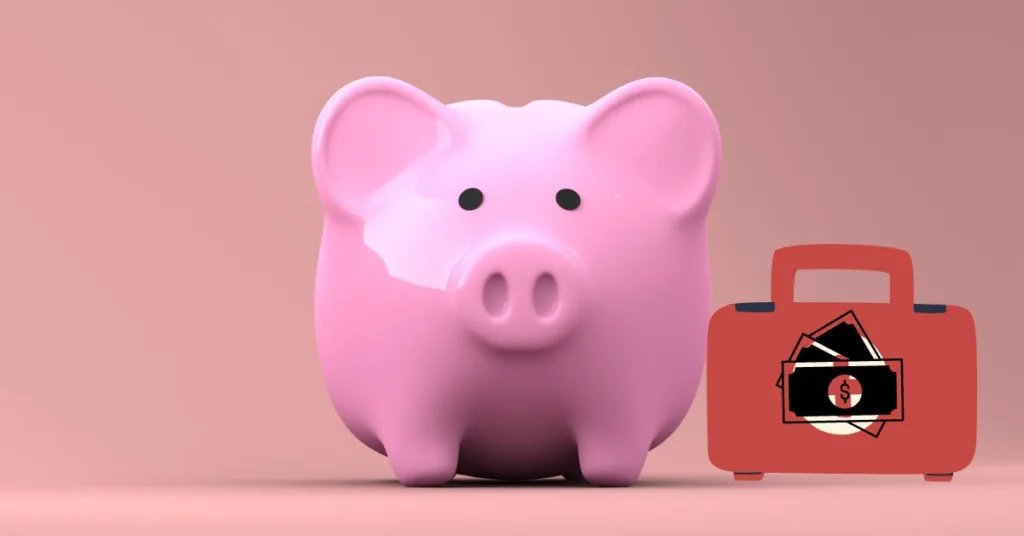This post may contain affiliate links to products or services. I may receive a commission for purchases made through these links with no cost on you. Please read my disclosure for more information.
Understanding consumer debt in today’s world is very important because most of us are consumers, and we commonly use debt to buy things we need or want. Whether it’s a new gadget, house, car, funding a business, etc., debt has become an integral part of modern financial systems.
In this blog post, we will explore consumer debt and its pros and cons.
Whether you’re new to managing money or have experience, knowing about these types of debt can help you make smarter financial choices and achieve long-term financial stability.
WHAT IS DEBT?
In simpler terms, debt is money you owe a person or a business.
It’s an obligation that requires a borrower, to repay money or resources to the lender, under specific terms and conditions.
Typically, people borrow money when they want or need something and don’t have enough money to pay for it.
People can use debt for a variety of purposes, such as financing education, buying homes or vehicles, funding business operations, or covering unexpected expenses.
While debt can provide opportunities for investment and growth, it also carries risks. This may be in the form of interest payments, potential default, and negative impacts on creditworthiness.
Therefore, managing debt responsibly is crucial for individuals to maintain financial stability and achieve long-term financial goals.
UNDERSTANDING CONSUMER DEBT
What exactly is consumer debt? These are debts incurred by an individual because of the purchase of products for household or personal use.
Consumer loans can be provided by banks, financial institutions, credit unions, and the government.
There are two types of consumer loans – revolving debt, and non-revolving debt.
People pay off revolving debt monthly. Whereas they make full upfront payments for loans on non-revolving debt, spreading them out over a predetermined period with set payments.
Financial experts regard consumer debt as inferior financing due to its extremely high-interest rates compared to mortgages.
KEY CHARACTERISTICS OF DEBT
Understanding key characteristics of debt is crucial for managing debt effectively. You would hear or see these terminologies when you take on debt, loan, or mortgage.
Principal Amount: The initial amount borrowed or owed.
Interest Rate: The cost of borrowing money, typically expressed as a percentage of the principal amount.
Repayment Terms: The agreed-upon schedule and method for repaying the debt, including the length, frequency, and number of payments.
Collateral: Some types of debt, like mortgages and auto loans, are secured by collateral. These are assets pledged as security against the debt, which the lender may seize if the borrower fails to repay according to the terms.
Creditworthiness: This is the borrower’s perceived ability to repay the debt, is often assessed based on factors such as income, credit history, assets, and existing debt levels.
Penalties and Fees: Debt agreements may include penalties and fees for late payments, early repayment, or other specific circumstances.
EXAMPLES OF CONSUMER DEBT
Credit Card Debt
Categorized as revolving debt and considered as one of the most common forms of consumer debt. Money owed on credit cards for purchases is made using the card (making it cashless).
It allows individuals to make purchases on credit with the promise of repayment later. If not paid off in full each month, interest accrues on the remaining balance.
Recommended reading: 7 Steps on How to Manage Credit Card Debt
Personal Loan Debt
A type of non-revolving debt that provides borrowers with a lump sum of money that must be repaid over a specified period, typically with interest. Repayment terms can vary depending on the lender.
People use this borrowed money for various personal reasons, such as covering medical expenses, making home improvements, or consolidating other debts.
Auto/Car Loan Debt
This loan is used to finance the purchase of vehicles, with the vehicle serving as collateral for the loan (in some countries). Like a mortgage, it’s repaid in monthly installments over a set period, usually a few years.
Student Loan Debt
A type of non-revolving debt in which the money borrowed is used for education expenses, such as tuition, books, and living expenses while attending school. Repayment typically starts after finishing school.
Government or private lenders may issue student loans.
* This loan may not apply to other countries.
UNDERSTANDING THE PROS AND CONS OF CONSUMER DEBT
Consumer loans, like any financial product, come with their own set of advantages and disadvantages.
Below are some advantages:
- Consumer loans provide quick fund access for things you need.
- They’re easy to get with simple forms online.
- You know how much to pay each month, making it easier to plan.
- Paying back loans on time helps your credit score.
- You can choose from many different types of loans to fit your needs.
Here are the disadvantages:
- You end up paying more because of extra fees (interest).
- If you’re not careful, loans can add up and make it hard to manage your money.
- Some lenders might try to trick you into bad deals.
- Missing payments can make it harder to borrow money in the future.
- If you don’t pay, you might lose something valuable like your car or house.
UNDERSTANDING WHY CONSUMER ARE DROWNING IN DEBT
Individuals can find themselves drowning in debt due to a combination of factors. I bet you and I, at some point can relate to this list:
- Easy access to credit, like credit cards and loans, tempts people to overspend and rely on debt, often leading to financial trouble as they chase instant gratification and postpone payments.
- Lack of financial knowledge contributes to poor financial decisions, as individuals may not understand budgeting, saving, or responsible borrowing, leading to unintended debt accumulation and repayment struggles.
- Unexpected expenses, such as medical emergencies or job loss, force individuals to turn to credit when they lack savings, creating a cycle of debt as they struggle to manage sudden financial burdens.
- Social pressures to maintain a certain lifestyle or keep up with peers drive individuals to overspend, accumulating debt to fulfill perceived societal expectations and desires for status or validation.
- Low income and rising living costs strain finances, pushing individuals to rely on credit to cover basic needs, leading to a cycle of debt as income fails to keep pace with expenses.
- Emotional factors like stress, anxiety, and impulsivity influence spending habits, as some people use shopping as a coping mechanism, leading to impulsive purchases and increased debt levels.
- Aggressive marketing and advertising tactics by financial institutions and retailers encourage excessive spending and borrowing through offers, rewards, and easy credit terms, enticing individuals to accumulate more debt than they can handle.
HOW TO MANAGE CONSUMER DEBT
Effective debt management is essential for individuals to maintain financial stability and achieve long-term financial goals.
Here are some steps in managing your debts:
Assessment: Evaluate your current financial situation by understanding the types and amounts of debt owed, interest rates, and repayment terms.
Budgeting: Create a comprehensive budget to track income and expenses, prioritize debt repayment, and allocate funds efficiently. You can download my FREE monthly budget spreadsheet.
Debt Repayment Strategies: Develop a plan to systematically pay off debts, which may involve prioritizing high-interest debts, utilizing debt repayment methods like the debt snowball or debt avalanche, and making consistent payments.
Negotiation: Communicate with creditors to explore options for lowering interest rates, negotiating payment plans, or settling debts for less than the full amount owed.
Financial Discipline: Practice responsible financial habits such as avoiding unnecessary spending, living within one’s means, and avoiding taking on additional debt.
Credit Counseling: Seek guidance from accredited credit counseling agencies or financial advisors who can provide personalized advice, debt management plans, and resources for improving your financial literacy.
Monitoring and Adjusting: Regularly monitor your progress towards debt reduction goals, reassessing financial priorities, and adjusting your debt management plan as needed.
Overall, effective debt management involves a proactive and disciplined approach to taking control of your finances, reducing debt burdens, and achieving financial stability and freedom.
CONCLUSION
In conclusion, understanding consumer debt is essential for making informed financial decisions and managing finances effectively.
By gaining insight into the complexities of debt and implementing sound debt management strategies, you can navigate through your financial journey with confidence and achieve long-term financial stability and success.
ACTION PLAN
1. List down all debt owed, their interest rates, and repayment terms.
2. Create a comprehensive budget to track income and expenses. Tip: You can download my FREE Monthly Budget Spreadsheet.
3. Develop a plan to systematically pay off debts. Tip: you can use debt snowball or debt avalanche method
4. Communicate with creditors.
5. Avoid unnecessary spending, live frugally, and avoid taking on additional debt.
6. Seek guidance from accredited credit counseling agencies or financial advisors.
7. Regularly monitor progress toward debt reduction goals.
8. Assess and adjust debt management plan as needed.





